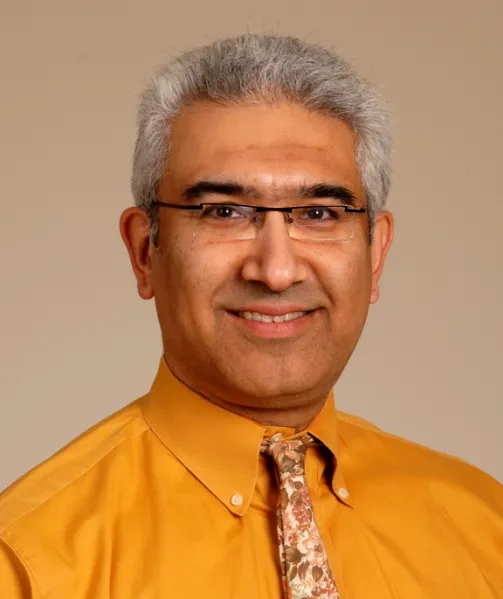
Jay P.
Shah, MD
Senior Staff Physiatrist
Clinical Investigator
Education Coordinator, Medical Section
301-496-4412
Dr. Jay P. Shah is a senior staff physiatrist and clinical investigator in the Rehabilitation Medicine Department at the NIH Clinical Center.
BA, University of California at Los Angeles
MD, Cayey School of Medicine
Dr. Shah is also an affiliate professor in the Department of Bioengineering at George Mason University. He completed his residency in Physical Medicine and Rehabilitation at New York Medical College in Valhalla, N.Y. and is a Diplomat of the American Board of Physical Medicine and Rehabilitation. He also completed the UCLA Medical Acupuncture Training Program and a Bravewell Fellowship at the Arizona Center for Integrative Medicine. He is education coordinator for RMD's medical section.
His interests include the pathogenesis and pathophysiology of myofascial trigger points (MTrPs) and the integration of physical medicine techniques with promising integrative approaches to the management of myofascial pain and dysfunction.
He and his co-investigators at the NIH and George Mason University have utilized novel microanalytical and ultrasound imaging techniques that have uncovered the unique biochemical milieu, viscoelastic properties and blood flow abnormalities of active (i.e., spontaneously painful) MTrPs and surrounding soft tissue. In addition, he is an associate investigator in NIH's Botulinum Toxin for Chronic Pelvic Pain in Women with Endometriosis protocol.
Dr. Shah is a well-known lecturer on the evaluation and treatment of chronic myofascial and musculoskeletal pain and the application of non-pharmacologic techniques including dry needling, electrical stimulation and acupuncture. He has given many invited lectures and taught hands-on workshops nationally and internationally. His presentations integrate the fascinating knowledge emerging from the basic and clinical pain sciences in order to improve evaluation and management approaches to neuro-musculoskeletal pain and dysfunction.
- David G. Simons Award, National Association of Myofascial Trigger Point Therapists, 2012
- Janet Travell Clinical Pain Management Award, American Academy of Pain Management, 2010
Gerber LH, Sikdar S, Aredo, J, Armstrong, K, Rosenberger, W, Shao H, Shah J. Beneficial Effects of Dry Needling for Treatment of Chronic Myofascial Pain Persist for 6 Weeks After Treatment Completion. PMR Volume 9, Issue 2, February 2017, Pages 105-112.
Turo D, Otto P, Hossain M, Gebreab T, Armstrong K, Rosenberger W, Shao, H, Shah JP, Gerber LH, Sikdar S. Novel Use of Ultrasound Elastography to Quantify Muscle Tissue Changes After Dry Needling of Myofascial Trigger Points in Patients with Chronic Myofascial Pain. Journal of Ultrasound in Medicine. 2015 Dec; 34(12) 2149-2161.
Shah, JP, Thaker N, Heimur J, Aredo J, Sikdar S, Gerber L. Myofascial Trigger Points Then and Now: A Historical and Scientific Perspective. PMR Volume 7, Issue 7, July 2015, Pages 746–761.
Gerber LH, Shah J, Rosenberger W, Armstrong K, Turo D, Otto P, Heimur J, Thaker N, Sikdar S. Dry Needling Alters Trigger Points in the Upper Trapezius Muscle and Reduces Pain in Subjects with Chronic Myofascial Pain. PMR Volume 7, Issue 7, July 2015, Pages 711–718
Stratton P, Khachikyan I, Sinaii N, Ortiz R, Shah J. Association of Chronic Pelvic Pain and Endometriosis with Signs of Sensitization and Myofascial Pain. Obstetrics and Gynecology. March 2015 Volume 125, Issue 3, p 719-728.
Gerber LH, Sikdar S, Armstrong K, Diao G, Heimur J, Kopecky J, Turo D, Otto P, Gebreab T, Shah J. A Systematic Comparison Between Subjects With No Pain and Pain Associated With Active Myofascial Trigger Points. PMR 2013 Nov;5(11):931-8.. Epub 2013 Jun 28.
Sikdar S, Shah, JP, Gebreab T, Yen, R-H, Gilliams E, Danoff JV, Gerber LH. Novel Applications of Ultrasound Technology to Visualize and Characterize Myofascial Trigger Points and Surrounding Soft Tissue Arch Phys Med Rehabil. 2009; 90:1829-1838.
Shah JP, Danoff JV, Desai M, McNamara L, Parikh S, Phillips TM, Gerber LH. Biochemicals associated with pain and inflammation are elevated in sites near to and remote from active myofascial trigger points. Arch Phys Med Rehabil. 2008; 89:16-23.
Shah JP, Gilliams EA. Uncovering the biochemical milieu of myofascial trigger points using in-vivo microdialysis: An application of muscle pain concepts to myofascial pain syndrome. Journal of Bodywork and Movement Therapies. 2008; 12(4): 371-84.
Shah JP, Phillips TM, Danoff JV, Gerber LH. An in vivo microanalytical technique for measuring the local biochemical milieu of human skeletal muscle. J Appl Physiol. 2005 Nov;99(5):1977-84. Epub 2005 Jul 21

